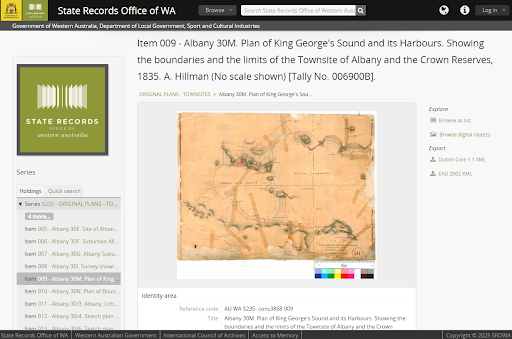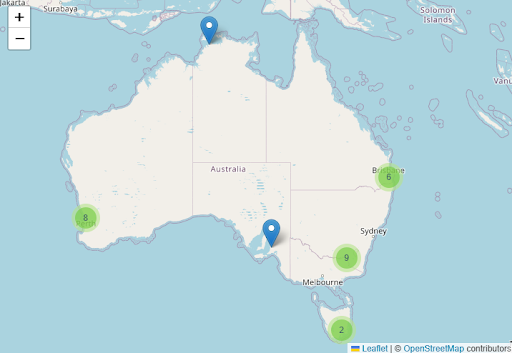Ever wonder what happens behind the digital scenes of the archival institutions that preserve our history and knowledge for the future? Well, this blog is a follow on from our last one about Archives where we talked about the digital infrastructure behind archives, and in this one we cover the software that sits behind these important institutions.
Firstly, a caveat: at Gaia Resources wherever possible we work with open source software. Right across our business, over the last 20 years (21 next month!) we have had a focus on open source software, ranging from spatial packages like QGIS through to the archival software that is the subject of this blog. So this will very much focus on the open source software that we work with.
There’s been a number of different open source software packages that we have worked with over the years that are relevant to Archives, including;
- Access to Memory (AtoM) - an archival management system,
- ArchivesSpace - another archival management system,
- Archivematica - a digital preservation system, and
- ResourceSpace - a Digital Asset Management System, and our newest system we bring into the stable.
Each of these different systems brings something different to the table, so we’ll run through them by categories.
Archival Management
We have at least a couple of options for archival management, and they each have different strengths and weaknesses.
AtoM was the first archival management system that we worked with, although it does not use the Australian Series System that is prevalent here in Australia Out of the Box. As an example, through our work implementing and supporting AtoM at the State Records Office of Western Australia (SROWA) saw us implement an Australian Series System modification (and a few other things) to the AtoM system. This has been in place now for ten years within SROWA. AtoM is a useful tool for smaller collections (which SROWA is not) and it has done a fantastic job for them, as well as a range of other organisations that we’ve worked with over the years. The team at Artefactual who manage AtoM are on the other side of the world from us in Canada, but we still get to keep in touch with them regularly.

ArchivesSpace is a much bigger beast, one that we have put in place as the core of the “archives ecosystem” that we have implemented for the Queensland State Archives. Again, they are another long term client, who we have been working with since 2018, delivering not only ArchivesSpace, but also the ArchivesGateway system that delivers an ingestion portal from other agencies to the Archives, the ArchivesSearch system for the public, and Archivematica for digital preservation (which we’ll touch upon later). This work has been delivered with our consortium partners from Hudson Molonglo and Recordkeeping Innovation, showing how the open source nature of our software enables more collaboration - especially pleasing as the Hudson Molonglo team were part of the original development of ArchivesSpace.

Digital Preservation
When we think about Digital Preservation (which is not digitisation) we think of Archivematica, another open source product managed by the team at Artefactual.
Digital Preservation is all about making sure those securely stored digital files can be accessed again in the future, and Archviematica has all the tools to make it happen. It’s a big collection of integrated open source tools that enable digital objects to be processed into long term formats and securely packaged away, and we have implemented and support it in organisations from very small ones (such as St Aloysius College) right up to very large ones - including Queensland State Archives again.
Digital Asset Management
Our newest entry into the stables at Gaia Resources is ResourceSpace, a digital asset management system that we’ve been working on behind the scenes for a little while. Our relationship with the UK company Montala who manage ResourceSpace is steadily building - they’re a company very much sharing the same values that we do (including a love for dogs - as you can see on their site). We are continuously growing our experience in ResourceSpace and we hope to see it in production sites in Australia in the near future.
This all shows you how broad the open source network is around Archival software - with companies in Canada, the UK and Australia all collaborating and working together on the future of the products and services around it. Unfortunately, there are still a range of myths about open source software that need to be debunked. These include:
- It’s insecure - which is patently untrue, as our regular external penetration tests and other security work proves,
- You can’t get support for it - also patently untrue because we provide those services, and the upstream developers and the community behind the software also back us up, and
- It’s not enterprise grade software - which, from the examples we listed in this blog, is also not a thing.
One of the things that often attracts people to open source software is the price tag - “free”. That’s not quite accurate as everyone needs to get fed across this wide network of people. So while we pass the software around freely, the services around it like implementation, support, infrastructure, and the like, do attract costs - but you pay for what you want to use, and there is no ongoing licence cost for the systems moving forward. So what we find in large implementations is that in the first year of implementation, the open source costs might be higher than commercial ones, but over time, that cost is quickly recouped as the ongoing costs are accrued for any additional development you want, and the ongoing support for the system.
However, the reason that we’re so supportive of open source software for archives and other collecting organisations, is the time scale of them - preserving content forever. Open source software - like any other software - does have limitations and in time will need to be upgraded and eventually replaced (we haven’t gotten there yet). However, you can always get the source code, and you can have much more control over how long you run the system for, independent of vendors. Importantly, you can also have much more control over a migration - it certainly helps when you can dive deeply into the code base and data models to assist in that transfer.
Across the communities that we work with we’ve implemented a wide range of open source software for different organisations - with collections ranging from the thousands to the millions in size - and some of these we’ve supported for over 10 years. This shows the impact that open source software can deliver.

For us, that impact has always been about making the world a better place - and the archives help us realise that mission by making sure that there are stronger institutions, a real sense of long term justice around keeping copies of decisions, and, in a world where this is rare - they are truth-keepers and truth-sayers. Supporting them through better software solutions that are open and extensible just makes sense.
If you want to know more about how open source software can assist you and your organisation - or want to get some information on the software we’ve implemented and what we’ve learned over the years - then drop us a line or start a conversation with us on Facebook, Instagram or LinkedIn
Piers